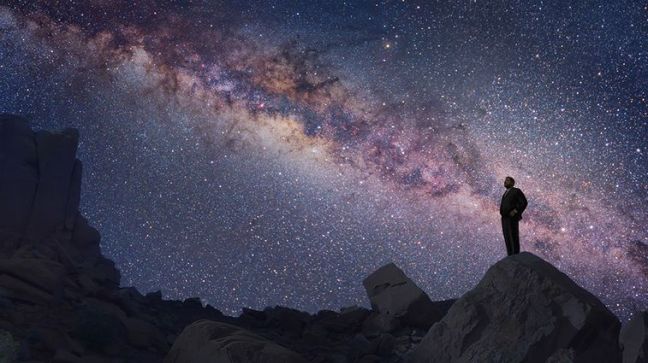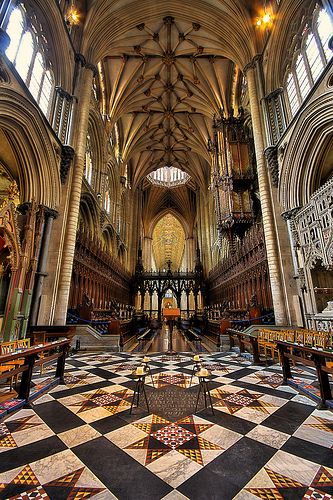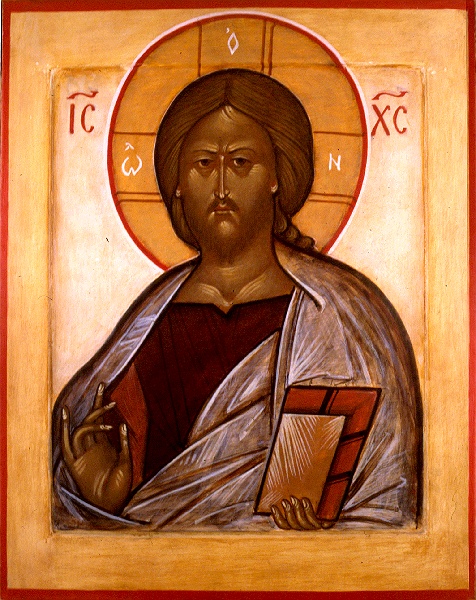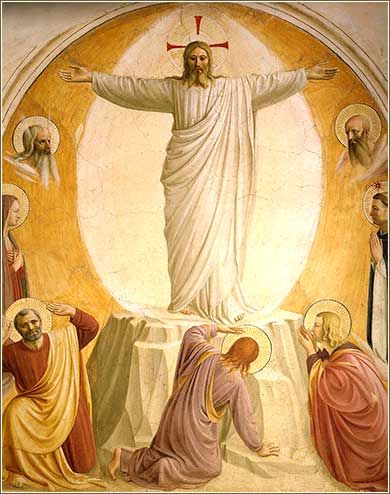Many people think that the creation of beauty is a personal process guided by intuition. Well, in many ways it is, but it’s not just that. There is a traditional language that artists, architects and musicians can use to create beautiful works of art and this a mathematical language. You may think it strange that there is such a thing, because for the most part it has fallen out of fashion. Many think that to teach such a thing would restrict creativity and make for sterile, inhuman art. I would say that history tells us another story. It is the architecture of the past that is beautiful and uplifting, and the grim, post-war city centers and housing projects – from the period when architecture schools stopped teaching harmony and proportion – and that are inhuman and depressing.
I would say that the knowledge of this mathematical language of beauty doesn’t stifle creativity, but in fact allows the artist to express his inspiration more powerfully. It gives him the means by which others can see his ideas. For example, there is an astounding variety and almost innumerable range of styles of architecture and art over centuries before the 20th century that attest to the fact that cultural and personal creative voices can be expressed and heard using this mathematical language.
You may not know it, but in fact there is one branch of this mathematical discipline that is still used today and taught in modern universities; and that is the mathematics of music. We still take it for granted that a composer needs to study the rules of harmony and other aspects of music theory if he is to compose new music. Without it, we just have random notes, which is what you hear from any five year old (apart from Mozart) hammering away at the piano. Look at the variety of music that continues to be composed to this very day because composers of any genre music, from popular, folk, classical acknowledge that the are certains principles that guide their creativity.
Well, the mathematics of visual beauty is just another branch of the same discipline; and I would say that anyone who is serious about understanding or creating visual art or architecture should know about this too.
Where does it begin?
The starting point for the whole idea of beauty is a psychological response to the world around us, the cosmos. The mathematics of beauty arises from the observation and description of the order that underlies it.
The assumption is made that as a general rule, those who look at the the cosmos, whether a detail of it, or a broad picture of it, we feel a positive emotion and are drawn to it. And, again speaking generally, that this is true for all people and all cultures from time immemorial and all places – ancient Greeks or modern man, religious or areligious, believing or atheist; east, west, north or south. In other words it is something universally human.

And furthermore, what we are responding to is some property of the cosmos itself – that we delight in our apprehension of an order and harmony that is in what we we are observing.
Whether it be animal..

or vegetable…

or mineral.

Fish…

or foul.

Beauty…

or beast.

If you are still doubtful that mathematics can stimulate and inspire boundless creativity – remember that this is where music theory comes from too. It is result of an analysis of what notes sound good together to most people. The octave or the perfect fifth or the perfect fourth are only considered worthy of examination because most people hear these intervals – two different notes in proximity – and they are consonant. The whole of music theory relies on consensus as a starting point and without it collapses. All art and architecture can be governed by this. And the more any of us study this, the more our lives naturally conform to this pattern of the cosmos, so that, as John Paul II described it in his Letter to Artists, our very lives become works of art that are participations in the creative work the Artist!
St Thomas attempted to characterize this emtional response to the cosmos (and anything beautiful) with the simple idea that when we perceive anything and it pleases us, we call it beautiful. Some prefered to use more powerful language and characterize the response – awe and wonder; but just like St Thomas they said that what we were responding to was called beauty. Modern psychological research attempts to characterize this response in a more nuanced way, but again connects it to what we call beauty.
But from any of these starting positions, what is striking is that when we attempt to describe the pattern of what we are seeing mathematical and what causes this response, the results are all compatible with each other.
There different sorts of analysis. The natural scientist analyses those observations and speculates so as articulate the mathematical laws of physics and chemistry, which quantify change in time. He steadily looks at smaller and smaller parts of the whole, in order to understand the greater picture too.
The traditional mathematics of beauty, that we will consider here, looks at how the different patterns in the order of the universe have differing power to create that common psychological response in us.
This mathematics of beauty becomes important to the creative artist, because the assumption is that if his work conforms to this same pattern then his work can stimulate that same resonse of pleasure, or awe, or wonder. Here is a piece of Islamic art.

The Christian takes this a step further and says that this awe and wonder is there because we are seeing a shadow of something even greater, the beauty of God manifested in his work, it bears the thumbprint of the one who fashioned it, and he made us to delight in it, and that this is a glorious indication of his love and power. As the psalmist says: ‘The heavens proclaim the glory of the Lord.’
If this is so, then we can analyse also anything else that proclaims the glory of the Lord, such as direct revelation in Tradition and Scripture and see if we see mathematical patterns suggested as well that might govern the patterns of our life and work. And this is what they did to add to the body of knowledge.

The good Christian artists is motivated to reflect the glory of God in his work, so that it too might draw people to Him.

As we draw near, the light gets brighter and attracts us more strongly…

This is why this field of the mathematics of beauty is often characterized a sacred number and sacred harmony and proportion; or sacred geometry. There is something of the divine about it; just as there is something of the divine in the beauty of the cosmos.
It is a pattern of creativity that is inspired by the origin of all beauty, God. All of it is embodied in the Word, the contemplations of whom will unlock all the secrets of the cosmos.

So that we, as part of the mystical body of Christ, the Church, might shine with the Light too, partaking of the divine nature, supernaturally transformed by an encounter with Christ in the sacred liturgy. Then we can be walking icons of Christ, a pixel of light in the Light, drawing others out in the world, whom we connect with as we go about our daily business, to the beauty of heaven.


When will this course be offered next?
LikeLike
Hi Mary
Thanks for contacting us. I am creating the material now and expect the registration to open at the end of October. I will have the first half of the course done by then, and then I will upload the second half by mid-December.
David
LikeLike